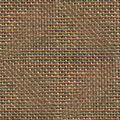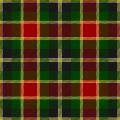Herringbone (cloth)

Donegal tweed (an example of herringbone)

Reversible camouflage HBTs
Herringbone, also called broken twill weave,[1] describes a distinctive V-shaped weaving pattern usually found in twill fabric. It is distinguished from a plain chevron by the break at reversal, which makes it resemble a broken zigzag. The pattern is called herringbone because it resembles the skeleton of a herring fish.[2] Herringbone-patterned fabric is usually wool, and is one of the most popular cloths used for suits and outerwear.[3] Tweed cloth is often woven with a herringbone pattern.
Fatigue uniforms made from cotton in this weave were used by several militaries during and after World War II; in US use, they were often called HBTs.[4][5]
See also[]
References[]
- ^ Calasibetta, Charlotte Mankey (1988). Fairchild's dictionary of fashion. New York: Fairchild Publications. ISBN 0870056352. OCLC 17932099.
- ^ "The RL Style Guide | Glossary | Herringbone". Ralph Lauren. Archived from the original on 2011-10-05. Retrieved 2008-11-24.
- ^ Fashion Institute of Technology (2006). ""The Tailor's Art," Menswear Fabrics - A Glossary". The Museum at FIT. Archived from the original on 2013-06-05. Retrieved 2008-11-24.
- ^ Stanton, Shelby (1992). "Summer Work and Service Uniforms". U.S. Army Uniforms of the Korean War. Stackpole Books. pp. 86–98. ISBN 0811729524.
- ^ Robinson, Aaron (2009-08-19). "Storming Normandy in a World War II Jeep". Car and Driver. Hearst Magazine Media, Inc. Retrieved 2019-04-29.
| Wikimedia Commons has media related to herringbone (cloth). |
Categories:
- Textile patterns
- Textile arts stubs


